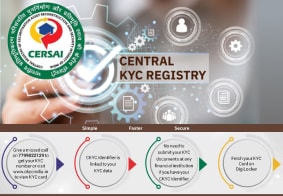CKYC Registry
-
Customer Service Contact us Service request Locate a branch
Find all the help you need
Scan the QR, get our app, and find help on your fingertips

Help CenterSupport topics, Contact us, FAQs and more
-
Login
Are you ready for an upgrade?
Login to the new experience with best features and services
-
Login
Are you ready for an upgrade?
Login to the new experience with best features and services
- Accounts
-
Deposits
IDFC FIRST Bank Deposits
View all Deposits -
Loans
IDFC FIRST Bank Loans
View all Loans - Wealth & Insure
-
Payments
IDFC FIRST Bank Payments
View all Payments -
Cards
IDFC FIRST Bank Cards
View all Cards - Blogs
- Corporate Account
-
Cash Management Services
IDFC FIRST Bank Cash Management Services
View all Cash Management Services - Supply Chain Finance
-
Corporate Lending
IDFC FIRST Bank Lending
View all -
Treasury
IDFC FIRST Bank Treasury
See more details - NBFC Financing
Support topics, Contact us, FAQs and more
- IDFC FIRST Bank Accounts
-
Savings Account
-
Corporate Salary
Account -
Senior Citizens
Savings Account -
First Power
Account -
Current Account
-
NRI Savings
Account -
TASC Institutional
Account -
Savings Account
Interest Calculator
- IDFC FIRST Bank Deposits
-
Fixed Deposit
-
Recurring Deposit
-
NRI Fixed Deposit
-
Safe Deposit Locker
-
FD Calculator
-
RD Calculator
- IDFC FIRST Bank Loans
-
Personal Loan
-
Consumer Durable
Loan -
Home Loan
-
Business Loan
-
Professional Loan
-
Education Loan
-
New Car Loan
-
Pre-owned Car Loan
-
Two Wheeler Loan
-
Pre-owned Two
Wheeler Loan -
Commercial Vehicle
Loan -
Gold Loan
-
Loan Against Property
-
Loan Against Securities
-
Easy Buy EMI card
-
Personal Loan
EMI Calculator -
Education Loan
EMI Calculator -
Home Loan
EMI Calculator
- IDFC FIRST Bank Wealth & Insure
-
FIRST Select
-
FIRST Wealth
-
FIRST Private
-
Mutual Funds
-
Sovereign Gold Bond
-
Demat Account
-
Term Insurance
-
Life Insurance
-
Health Insurance
-
General Insurance
-
Bonds
-
Loan Against
Securities -
Portfolio Management
Service
- IDFC FIRST Bank Payments
-
FASTag
-
Credit Card
Bill Payments -
UPI
-
Funds Transfer
-
Forex Services
-
Pay Loan EMI
- IDFC FIRST Bank Cards
-
Ashva :
Metal Credit Card -
Mayura :
Metal Credit Card -
FIRST Millennia
Credit Card -
FIRST Classic
Credit Card -
FIRST Select
Credit Card -
FIRST Wealth
Credit Card -
FIRST WOW!
Credit Card -
Deals
-
Debit Cards
-
Co-branded Cards
-
Credit Card
EMI Calculator -
FIRST Corporate
Credit Card -
FIRST Purchase
Credit Card -
FIRST Business
Credit Card
- Premium Metal Credit Cards
-
AshvaLifestyle1% Forex₹2,999
-
MayuraLifestyleZero Forex₹5,999
-
FIRST PrivateInvite Only
- Best for travellers
-
MayuraZero ForexMetal₹5,999
-
Ashva1% ForexMetal₹2,999
-
FIRST WOW!Zero ForexTravelLifetime Free
-
FIRST SWYPTravel OffersEMI₹499
-
FIRST Select1.99% ForexLifestyleLifetime Free
-
FIRST Wealth1.5% ForexLifestyleLifetime Free
-
Club VistaraTravelLifestyle₹4,999
-
IndiGo IDFC FIRST Dual Credit CardTravelLifestyle₹4,999
- Max benefits, Free for life
-
FIRST Classic10X RewardsShoppingNever Expiring Rewards
-
FIRST Millennia10X RewardsShoppingNever Expiring Rewards
-
FIRST Select10X RewardsLifestyle1.99% Forex
-
FIRST Wealth10X RewardsLifestyle1.5% Forex
-
FIRST WOW!RewardsTravelZero Forex
-
LIC ClassicRewardsInsuranceShopping
-
LIC SelectRewardsInsuranceShopping
- Reward Multipliers
-
AshvaLifestyleMetal₹2,999
-
MayuraLifestyleZero Forex₹5,999
-
FIRST ClassicNever Expiring RewardsShoppingLifetime Free
-
FIRST MillenniaNever Expiring RewardsShoppingLifetime Free
-
FIRST SelectNever Expiring RewardsLifestyleLifetime Free
-
FIRST WealthNever Expiring RewardsLifestyleLifetime Free
- Rewards & Credit on UPI
-
FIRST Power+FuelUPI₹499
-
FIRST PowerFuelUPI₹199
-
FIRST EA₹NVirtual1% Cashback₹499
-
FIRST DigitalVirtualUPI₹199
-
IndiGo IDFC FIRST Dual Credit CardUPITravelDual cards
- Fuel and Savings
-
FIRST PowerRewardsUPI₹199
-
FIRST Power+RewardsUPI₹499
-
LIC ClassicRewardsInsuranceShopping
-
LIC SelectRewardsInsuranceShopping
- Express and Flaunt
-
AshvaMetal1% Forex₹2,999
-
MayuraMetalZero Forex₹5,999
-
FIRST SWYPEMIOfferMAX₹499
-
FIRST MillenniaRewardsShoppingLifetime Free
- FD Backed rewarding Credit Cards for all
-
FIRST EA₹NVirtualCashback₹499
-
FIRST WOW!Zero ForexTravelLifetime Free
-
CreditPro Balance TransferTransfer & SaveReduce InterestPay Smartly
- IDFC FIRST Bank NRI Forex Solutions
-
Send money to India-Wire transfer
-
Send money to India-Digitally
-
Send money abroad
-
Max Returns FD (INR)
- IDFC FIRST Bank MSME Accounts
-
Platinum Current
Account -
Gold
Current Account -
Silver Plus
Current Account -
Merchant Multiplier
Account -
Agri Multiplier
Account -
TASC Institutional
Account -
Dynamic Current
Account -
World business
Account -
First Startup
Current Account
- IDFC FIRST Bank Business Loans
-
Business Loan
-
Professional Loan
-
Loan Against Property
-
Business Loan for Women
-
Working Capital Loan
-
Construction Equipment Loan
-
Machinery Loan
-
Healthcare Equipment Loan
- IDFC FIRST Bank Business Solutions
-
Payment Solutions
-
Tax Payments
-
Doorstep Banking
-
Point of Sale (POS)
-
Escrow Accounts
-
NACH
-
Payment Gateway
-
UPI
-
Virtual Accounts
-
As per amendment in the Income Tax Rules, PAN or Aadhaar are to be mandatorily quoted for cash deposit or withdrawal aggregating to Rupees twenty lakhs or more in a FY. Please update your PAN or Aadhaar. Kindly reach out to the Bank’s contact center on 1800 10 888 or visit the nearest IDFC FIRST Bank branch for further queries.
-
-
Most Searched
Sorry!
We couldn’t find ‘’ in our website
Here is what you can do :
- Try checking the spelling and search
- Search from below suggestions instead
- Widen your search & try a more generic keyword
Suggested
Get a Credit Card
Enjoy Zero Charges on All Commonly Used Savings Account Services
Open Account Now

No one is immune to the dark side of the web, whether adults or children. Gone are the days when kids could be barred from using the internet until they are older. Thanks to growing smartphone usage and a plethora of kids’ edutainment apps available on mobile devices, the internet has become a fundamental part of their budding years.
According to Pew Research Center, 60 percent of parents reported that their children began using smart devices before they were five, while one-third said their kids were online before they were two. So, when it comes to protecting children from the internet, banning is impractical. Educating them about cyber safety and online frauds, however, is the best course of action.
Here’s how you can teach your kids safe browsing habits and how to protect themselves from online frauds.
1. Educate your children about various frauds
The first thing to do is to talk to your kids about different types of online frauds and how these can impact them and the family. You could make a start by following this checklist:
· Lay emphasis on scams, cyber bullying, and misinformation that especially target kids
· Train children to share minimal personally identifiable information; that too only with people/websites that are trustworthy
· Warn them about strangers asking for personal data via phishing links in videos, or invitations to meet people on gaming platforms
· Teach them not to share personal information (such as their phone number or home address) or give strangers access to their personal devices
· Educate them on identifying and mitigating threats from cyberbullying and fraud, blocking people, deleting personal information from suspicious platforms, as well as saving evidence in case things escalate
2. Show them how to identify suspicious links
Both children as well as adults can fall prey to phishing scams. In the past, this was restricted to email, but now it is everywhere – text messages, in-game chats, videos, social media websites, etc. The best way to teach kids to identify phishing links is to show them examples. To ensure that they stay safe online, you need to explain to them the dangers of clicking on dubious links. For instance, it could lead to their social media accounts getting hacked and loss of personal information leading to financial loss.
READ MORE
3. Instruct them to stick with trusted apps
Hundreds of gaming and social media apps are created to entice kids every day. As a parent, you must teach them that one safe online habit to follow at all times is to never install random software or apps without your permission or knowledge. In fact, convey to them that even app pop-ups that appear on educational websites can be involved in online frauds. Explain to them that such software and app downloads can contain viruses, spyware, malware, ransomware, etc. These can steal your data, crash your computer, or even gain complete access to your device.
4. Teach them to be sceptical about freebies, contests, etc.
Fraud detection needs to be taught from a young age. This essentially means being able to differentiate what is real from what is fake. Children and young adults often fall victim to false messages involving freebies, prize contests, scholarships, etc. A valuable lesson you can impart to your kids is that there is no such thing as a free lunch. This essentially implies it’s not possible to get something for nothing (or for very cheap). The lesson will hold them in good stead not just for online fraud prevention but throughout their life. Teach them how to identify fake messages, giving real-life examples of fraudulent websites, misleading videos, phishing emails, etc., so they can identify them easily.
5. Urge them to report suspicious activity
Quick action is key to mitigating loss in an online scam. Ask your children to inform you immediately if they discern any suspicious online activity. This includes dubious websites, fraud messages, strangers reaching out to them, etc. Timely knowledge will allow you to quickly contact cyberlaw enforcement authorities and even your bank to safeguard your money. It is important that you build trust with your kids. Make sure they know you have their back, no matter what. This way, they will not hesitate to come to you if they accidentally click on a link or fall victim to social engineering tactics.
6. Encourage them to spread awareness
Once you feel your children have understood the importance of online safety and gained the right information, encourage them to teach their friends how to avoid online fraud. Inspire them to share the dos and don’ts of internet usage with their friends. For instance, they should never divulge personal information or photos, befriend random strangers, agree to meet unknown persons, click on suspicious links, or grant access to their devices. This will not only help their friends against online frauds but also act as a constant reminder to themselves to stay safe.
Conclusion
While you focus on teaching and protecting your children from online frauds, there are a few things you, as a parent, need to remember as well. First of all, keep a close watch on your children’s online activity, especially if they are in the 9-15 age group. This is typically when they get active on social media and gaming portals. Watch out for interactions with people you do not know. Most importantly, never store any sensitive information, such as personal data, banking passwords, etc., on devices your kids use or that you share with them. This can drastically reduce the chances of financial fraud.
Most importantly, always bank with a trusted financial agency such as IDFC FIRST Bank, which has put in place robust security measures to protect customers from online frauds at all times. To help parents, such as you, learn about different online scams so you can enable your kids’ learning, IDFC FIRST Bank has an exhaustive repository of information available here. Leverage this information to protect your children as they go online.
Disclaimer
The contents of this article/infographic/picture/video are meant solely for information purposes. The contents are generic in nature and for informational purposes only. It is not a substitute for specific advice in your own circumstances. The information is subject to updation, completion, revision, verification and amendment and the same may change materially. The information is not intended for distribution or use by any person in any jurisdiction where such distribution or use would be contrary to law or regulation or would subject IDFC FIRST Bank or its affiliates to any licensing or registration requirements. IDFC FIRST Bank shall not be responsible for any direct/indirect loss or liability incurred by the reader for taking any financial decisions based on the contents and information mentioned. Please consult your financial advisor before making any financial decision.
The features, benefits and offers mentioned in the article are applicable as on the day of publication of this blog and is subject to change without notice. The contents herein are also subject to other product specific terms and conditions and any third party terms and conditions, as applicable. Please refer our website www.idfcfirstbank.com for latest updates.






















